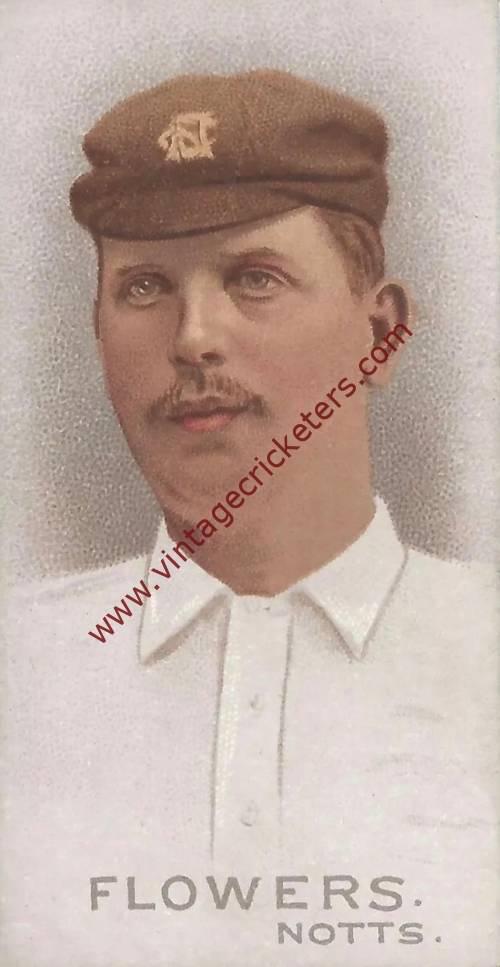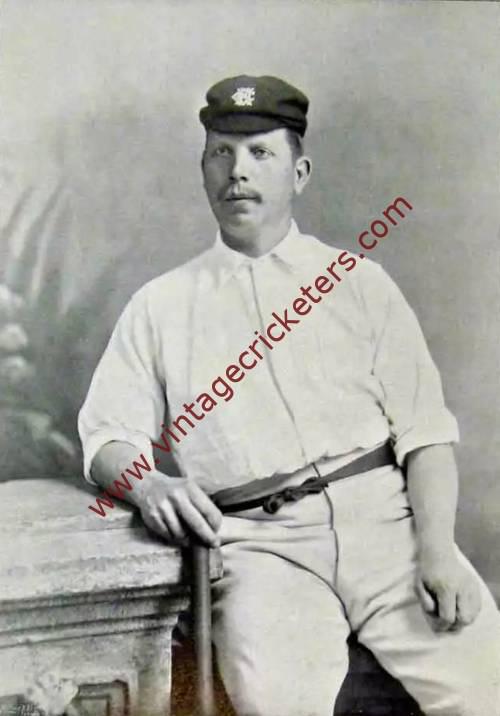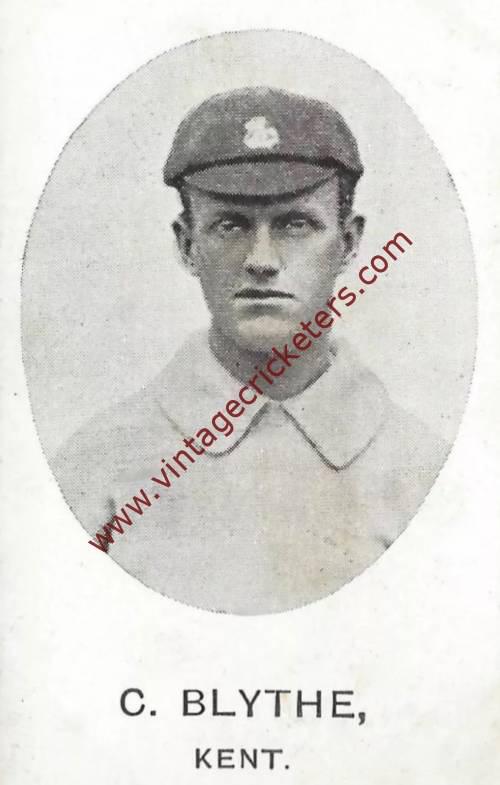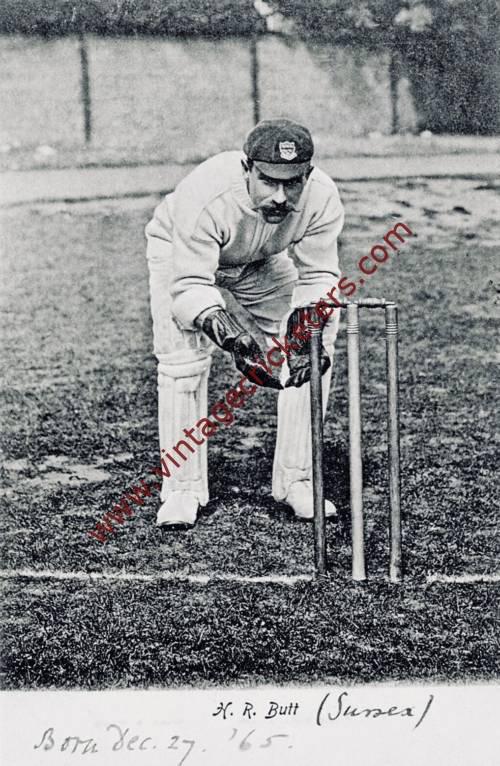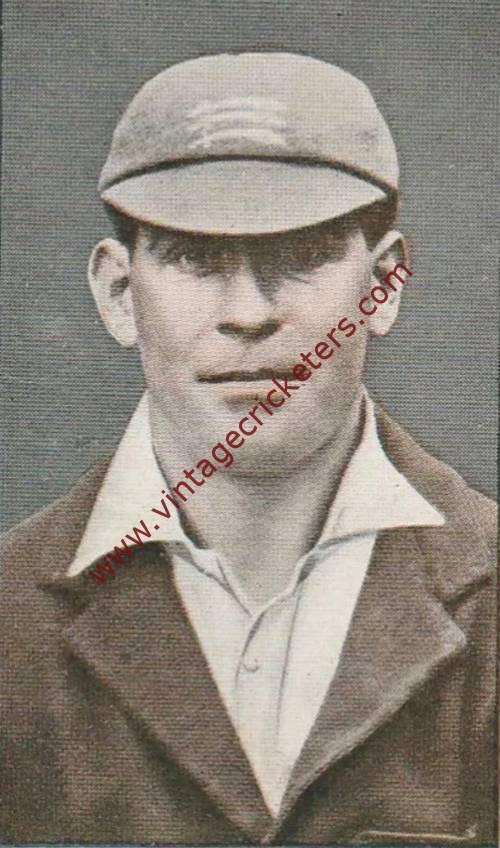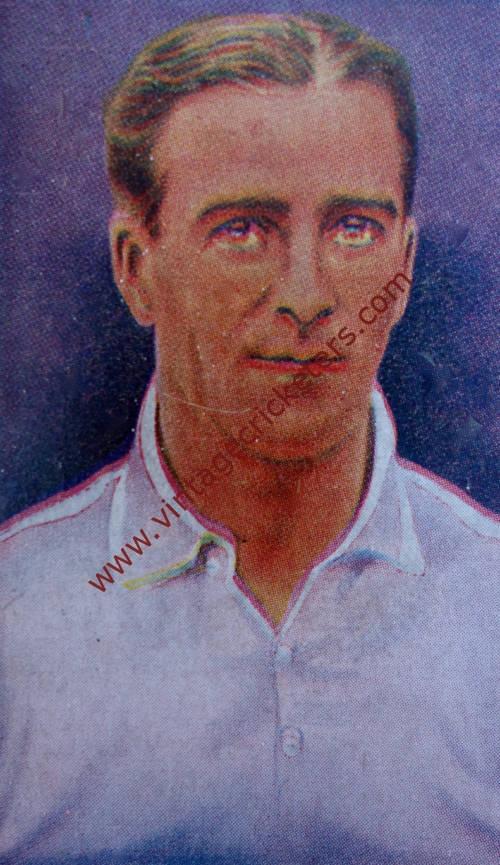Please choose your photo size from the drop down menu below.
If you wish your photo to be framed please select Yes.
Note: 16″x 20″not available in a frame.
Images can also be added to accessories. To order please follow these links
£8.95 – £49.95
Please choose your photo size from the drop down menu below.
If you wish your photo to be framed please select Yes.
Note: 16″x 20″not available in a frame.
Images can also be added to accessories. To order please follow these links
The maximum number of views of this element is reached.
Please contact the webmaster to enable unlimited views.
Calverton, Nottinghamshire born Wilfred Flowers was one of the leading all rounders of his day who first played for Nottinghamshire in 1877, and established himself slowly in a very strong side despite being known to be unplayable on a sticky wicket. In 1881, however, a players’ strike devastated Nottinghamshire and Flowers, seen as a player with less resolve than Alfred Shaw, Fred Morley, Arthur Shrewsbury, and John Selby, was approached by County officials and took advantage of the opportunity to become much more important in the redevelopment of the County.
Flowers took such advantage of this that in 1882 he took one hundred wickets for the first time. His batting, which had been not outstanding but valuable in an era of very low scoring, developed greatly the following year, in which Flowers became the first professional to do the double of 1,000 runs and 100 wickets. Playing for the Marylebone Cricket Club (M.C.C.) against Derbyshire, Flowers had the outstanding record of an innings of 131 and match figures of 11-87.
He bettered this for the M.C.C against Cambridge the following year, scoring 122 and taking fourteen wickets for 160 runs, and despite not doing quite so well with either bat or ball was still good enough to tour Australia with Alfred Shaw’s teams in 1884-85, making his Test match debut for England at Adelaide in December 1884. However, not physically strong enough for the hotter climate and drier wickets of Australia, Flowers only rarely lived up to his English form, as when taking 5-46 in the Third Test and eight 8-31 in the first match on a rain-damaged wicket.
He did maintain his form well enough to tour again in 1886-87, but this time Flowers did very little worthy of his reputation. Even at County level, Flowers was increasingly overshadowed, especially in dry weather, by the physically hardier William Attewell. Nor did his batting advance during a succession of wet summers, but in the dry season of 1893 Flowers reached a four figure run aggregate for only the second time. In the process he played an innings of 130 against the touring Australians including Charles Turner, George Giffen and Hugh Trumble, and was thus unsuccessfully picked for his eighth and last Test at Lord’s, where he made 35 but was omitted in favour of Johnny Briggs who was bowling immensely better at County level. In his 8 Test matches, he managed a batting average of 18.14 with a single half century, 56 against Australia at Sydney in February 1885. He took 14 wickets at 21.14 with just the single 5 wicket innings.
Flowers still bowled well in 1894, but in the dry weather of 1895 his bowling declined badly: in his final season of 1896 he was put on for only twenty overs. He did achieve the notable feat of scoring a century in his last match against Sussex.
Flowers was awarded a benefit match in 1899, but the match between Middlesex and Somerset at Lords turned out to be a financial disaster. The match was finished in just over 3 hours, making it the shortest first class match ever played. In 442 first class matches, Flowers scored 12,891 runs including 9 centuries and 56 half centuries, averaging 20.07. He took 1.188 wickets at 15.89 apiece, with a best performance of 8-22, taking 5 or more wickets in an innings 73 times and taking 10 wickets in a match on 15 occasions. He also took 222 catches.
After retiring as a player, Flowers served as an umpire from 1907 to 1912. His cousin Thomas Flowers also played first-class cricket.
| Weight | N/A |
|---|
